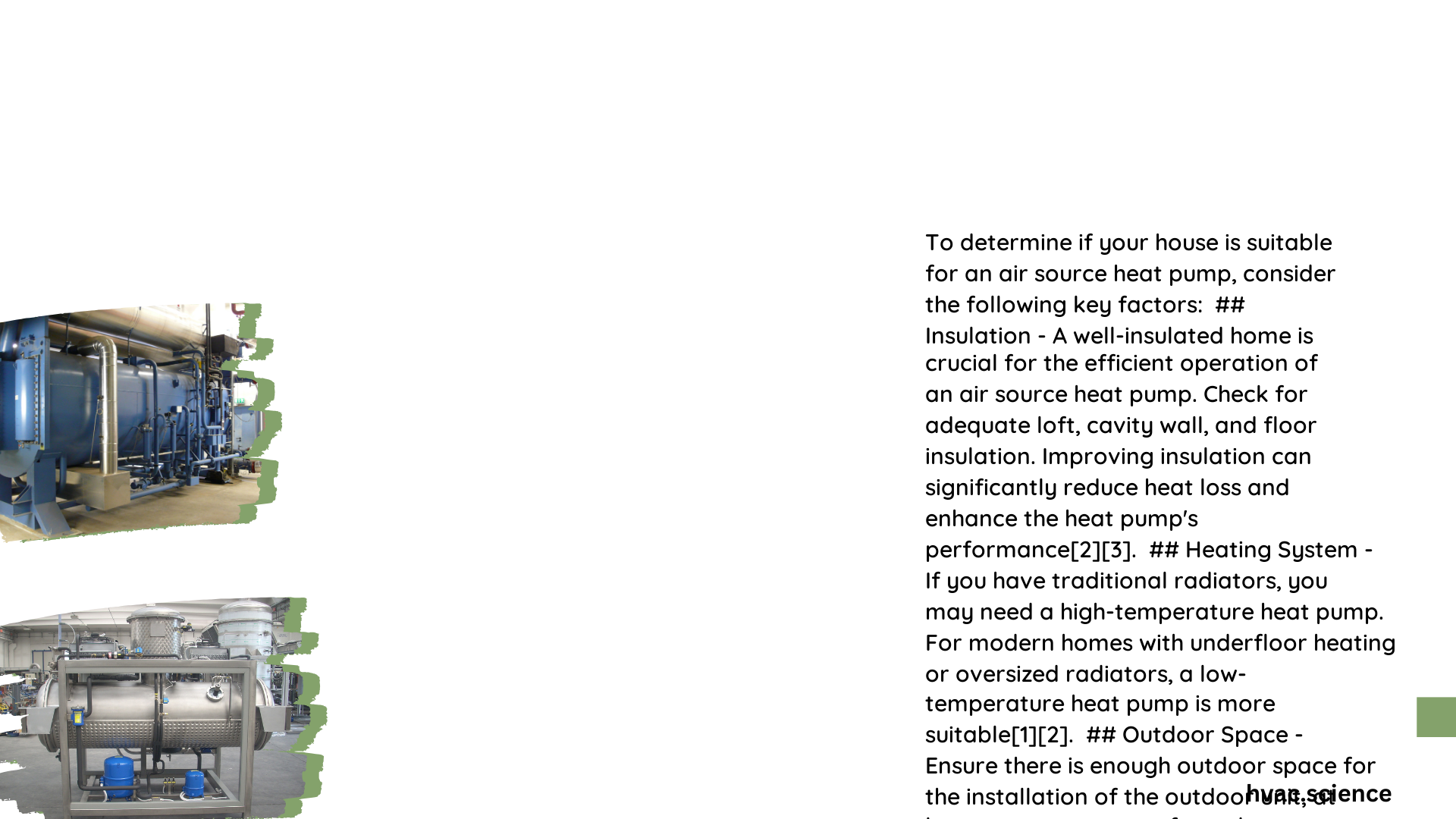Determining whether your house is suitable for an air source heat pump involves a comprehensive evaluation of multiple factors including insulation quality, property characteristics, climate conditions, and existing heating infrastructure. Homeowners seeking energy-efficient heating solutions must carefully assess their property’s thermal performance, structural integrity, and environmental compatibility to ensure optimal heat pump functionality and long-term cost-effectiveness.
What Makes a House Compatible with Air Source Heat Pumps?
How Do Insulation Standards Impact Heat Pump Performance?
Insulation is the cornerstone of heat pump efficiency. Proper thermal resistance determines how effectively your home retains heat and reduces energy consumption. Here’s a detailed breakdown of ideal insulation standards:
Wall Insulation Requirements
- Recommended R-value: 2.29–3.70 m²K/W
- Optimal performance range: 3.30 m²K/W or higher
- Critical for minimizing heat loss
Roof Insulation Specifications
- Ideal R-value: 5.28–6.87 m²K/W
- Minimum acceptable standard: 4.54 m²K/W
- Significantly impacts overall thermal performance
| Insulation Area | Minimum R-Value | Optimal R-Value |
|---|---|---|
| Walls | 2.29 m²K/W | 3.30 m²K/W |
| Roof | 4.54 m²K/W | 6.87 m²K/W |
| Floors | 2.29 m²K/W | 5.28 m²K/W |
What Property Characteristics Support Heat Pump Installation?
Size and Heating Load Considerations
- Heating load calculation is more critical than pure square footage
- Factors influencing load:
- Building insulation quality
- Air leakage rates
- Window thermal performance
- Local climate conditions
Typical Heating Load Ranges
- Large homes (4600+ sq ft): 50,000 BTU/hr
- Well-insulated properties: 20,000-30,000 BTU/hr
- Average residential properties: 37,500-47,000 BTU/hr
Where Should Air Source Heat Pump Be Located?
Optimal installation locations require strategic planning:
Location Selection Criteria
- Minimal direct sunlight exposure
- Protected from strong winds
- Proximity to electrical supply
- Near existing ductwork
- Adequate airflow circulation
What Temperature Ranges Support Heat Pump Efficiency?
Air source heat pumps demonstrate remarkable adaptability:
– Operational temperature range: -20°C to -25°C
– Maintained efficiency even in challenging climates
– Performance varies with specific model and technology
How Do Local Regulations Impact Installation?
Critical pre-installation considerations:
– Check municipal zoning regulations
– Obtain necessary permits
– Conduct professional site assessment
– Evaluate noise restriction guidelines
– Confirm aesthetic compliance with neighborhood standards
What Additional Factors Determine Suitability?
Technical Evaluation Checklist
- Electrical system compatibility
- Existing heating infrastructure
- Home’s overall energy efficiency
- Budget for potential retrofitting
- Long-term sustainability goals
Conclusion

Determining your house’s suitability for an air source heat pump requires a holistic assessment. While general guidelines provide direction, professional energy audits offer the most accurate recommendations tailored to your specific property.
Recommended Next Steps
- Conduct professional energy assessment
- Evaluate current insulation standards
- Calculate precise heating load
- Consult certified heat pump installers
